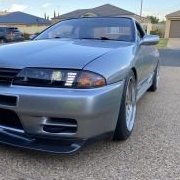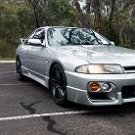Controlling VCT on RB25DET
Announcements
-
Similar Content
-
Latest Posts
-
Put a camera facing your dashboard so you can film the gauges. Head out to a straight but of road, and filming it as you go from a stand still at wide open throttle to as fast as you can/feel comfortable doing. Then film the dash board as you for example accelerate like normal onto a freeway. This will give us an indicator from Speedo of your expectation of slow, and will give us the rpm reading too to see if it's shifting. (Auto still has tacho from memory)
-
Buy yourself the cooling system pressure tester. Being able to pump it up, and have a gauge on it, AND have a cold engine makes it much easier / practical to diagnose. Additionally as the engine isn't running, you can listen for pin hole leaks as well as watching if pressure drops away. In addition, you can pressurise and while doing so, watch all the little rubber hoses. Some fail very brittle, and will just leak, while others can end up very soft and bulge. While a bulging hose isn't necessarily leaking, one of those small ones starting to stretch / expand in a bad way is an indicator that you'll be looking to replace that one soon Depending on if this is a project car, or you'll be dailying it in the summer months would alter how I'd be most comfortable with driving the car and how I'd replace. If you're planning to use it as a daily, with no backup, I'd pull the engine, and replace all the external oil/water lines in one big swoop. At the same time do the timing belt, water pump, tensioners etc. Do not open the engine at all. We just want to replace all the things that are inexpensive as a single item, but a PITA when they go. By doing the above, you've made the car from a bunch of age related issues more reliable. If it's a project, and you like swearing while trying to reach into dirty hard to reach places to replace a single hose that may or may not be the leaky one. Just replace the leaking/bad ones as they need it. If it's a project and you'd rather swear at the car once and enjoy it as much as possible, then refer to the process I mentioned in how I'd want to do it if it were a daily. However, the approaches above do come down to how much spare pocket change you have. Pulling the engine and dropping over a thousand dollars on parts, may not be practical for you. Oh, if engine outing, I'd replace as many silicon/rubber inlet joiners as possible too.
-
Yeah, they're pretty dumb though...ie; they'll throw a solenoid error if the solenoid is dead, shorted, wiring is open circuit, or even if the driver transistor has failed (they can't self-diagnose much, they can only test inputs/outputs)... but if you wanted to try, I believe it's this protocol....(uses a long pulse indicator with short pulse counter)...
-
Yeah I'll do what I can without taking off any major parts for now. If it becomes clear I won't get far with the engine in the car I'll have to think about the next steps. I am not too stuck on keeping everything 100% OEM, if there is better solutions, like converting most lines to braided with AN adapters, I'd rather do that than buy overpriced new "shit" parts.







Recommended Posts
Create an account or sign in to comment
You need to be a member in order to leave a comment
Create an account
Sign up for a new account in our community. It's easy!
Register a new accountSign in
Already have an account? Sign in here.
Sign In Now